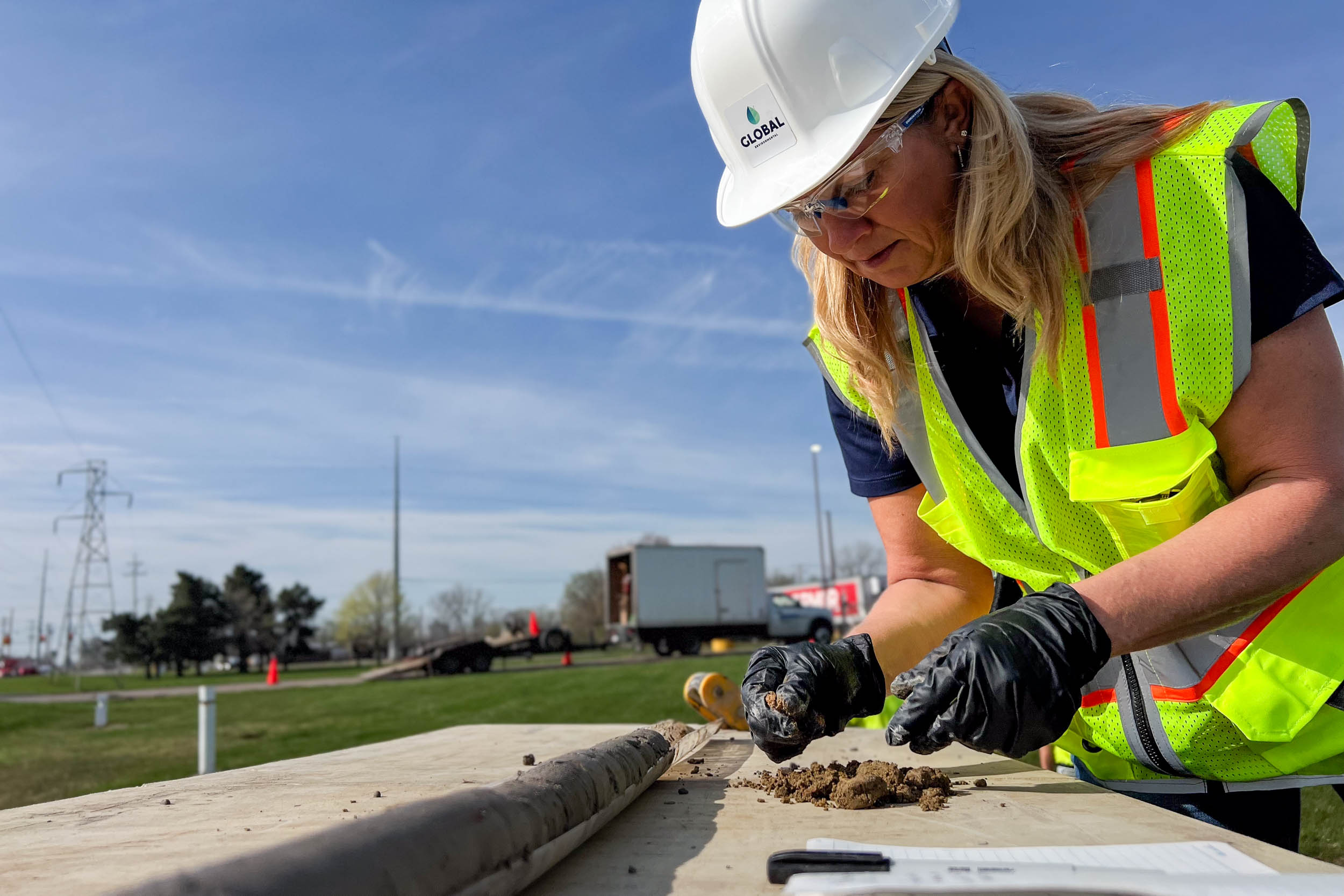Global Conducts Environmental Investigation in Central Michigan

Overview
Equipment
B-52 Hollow Stem Auger Drill Rig for initial monitoring well installation
Track-mounted GeoProbe® DT66 for soil borings and monitoring wells
Air knife for utility corridor soil sampling
Pump-and-treat system for groundwater remediation
Air stripper for VOC removal from extracted groundwater
Ground Penetrating Radar (GPR) for subsurface feature identification
Solution
The investigation and closure process at this Part 213 Leaking Underground Storage Tank (LUST) site began after three underground storage tanks were removed and two confirmed releases were documented. Initial remediation efforts included a pump-and-treat system equipped with an air stripper to reduce contaminant levels in groundwater. While effective, sampling still revealed exceedances of Michigan’s Residential Drinking Water Criteria (RDWC), necessitating further investigation.
Global installed 21 monitoring wells using a hollow stem auger drill rig to support early characterization efforts. The team expanded the investigation with sentinel and non-aqueous phase liquid (NAPL) well installation, ground-penetrating radar (GPR) surveys, and utility backfill sampling. Quarterly sampling of monitoring wells and catch basins continued, and site-specific Volatilization to Indoor Air Pathway (VIAP) criteria were requested from the Michigan Department of Environment, Great Lakes, and Energy (EGLE) to support closure.
To supplement these efforts, Global later installed over 30 soil borings and two additional monitoring wells using a track-mounted GeoProbe® DT66. An air knife was also used to safely sample utility corridors without disrupting buried infrastructure. The data collected was used to define exposure pathways, develop a Conceptual Site Model (CSM), and submit a Final Assessment Report and draft Restrictive Covenant for EGLE approval.
Recent Projects





